How To Use Your Scanning Software To Fix Your Slide Scan
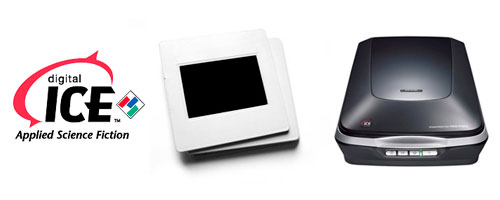
In this article you're going to learn how to use your scan software and fix...
- Any spots, dust, scratches that ruin your image
- Fix faded colours and make them look natural
- Stop wasting time trying to fiddle around with scanner settings
WARNING: Digital ICE is a quick fix. If you find that Digital ICE doesn't give you the results you expected, then I highly recommend that you check out my Advanced Scanning Tips.
3 Major Problems When Scanning Slides
Scanning isn't perfect. That's why every scanner comes with software like Digital ICE to help you repair your scans. Before you learn the how to, you need to know the 3 major problems.
Problem One: Too Much Dust, Debris, Scratches
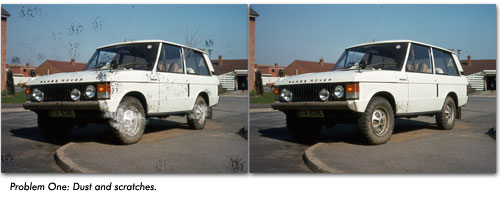
When you look at your slide, you can't see it. But when you blow it up into a 24" x 36" digital, you are going to see every minute dust, scratch, and other debris. This debris is going to ruin your image.
Problem Two: Grain / Noise

Are your slide scans coming grainy? Does the sky look like coloured sand paper? Why is this happening?
Well, if you're seeing grain, it's because when your dad took those old photo long time ago he used high quality film. Yeah, high quality. Higher quality film has more detail and allows you to print at higher sizes (bigger than 4x6).
Unfortunately we're not printing... so we don't need this noise.
Problem Three: Faded Colours / Unnatural Colours
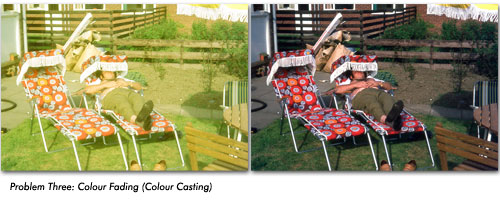
Are your slide scans coming out too reddish? Blue? Too light?
The technical term is called "Colour Casting". And it may look like faded colours, but the fact is it's your scanner doing this. Even if you have a slide that was developed 3 minutes, you'll still get colour casting when you scan it.
If you look closely at a slide, you'll notice the actual film is very glossy. This gloss is also picked up by your scanner. And the result is colour casting (or colours that don't look natural or faded).
3 Easy Steps To Fix These Problems Using Digital ICE
Once you've set your slides onto your scanner, and picked your DPI, you can now hit the Preview Button...

Then find your "Adjustments" area. This can also be called Digital ICE, or Scan Enhancements...
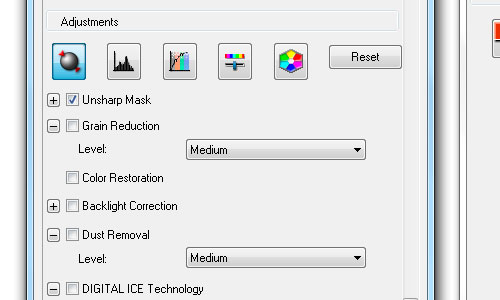
And here's how to use all these buttons...
Step One: Repair Dust
To fix dust and scratches, all you have to do is click on the Digital ICE button. Here's how my scanner setting look like...
Epson Digital ICE settings...

Nikon Digital ICE settings....
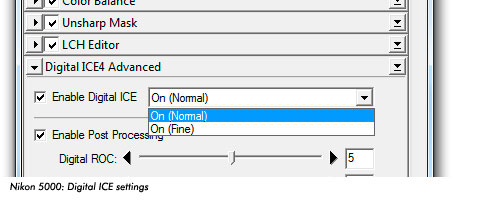
You may also see two settings for Digital ICE: quality vs. speed. Quality will do a much finer job at removing dust and scratches, but it will take longer. So do two passes, one quality and one speed. Compare the two and decide which you prefer.
Step Two: Fix Grain / Noise
If you notice your scans look a bit grainy, then you'll need to use the "Grain Reduction" or "Digital ROC / GEM". Here's what my settings look like...
Epson Grain Reduction settings...

Nikon Grain Reduction (ROC and DEE) settings...

Again, you'll notice you'll have different levels. I would just keep them at Medium. If your levels are too high, then your digital images will look like a painting.
Step Three: Fix Colour Fading (Colour Casting)
Now for the biggest step! This step is very important because you want your colours to look natural and as close to the original as possible. Here's how...
You can try the "auto" fix. Look for something a check box called "Color Fix", "Color Restoration", "Color Balance", "Image Enhancer"
Here's what my setting's look like...
Epson Color Fix...
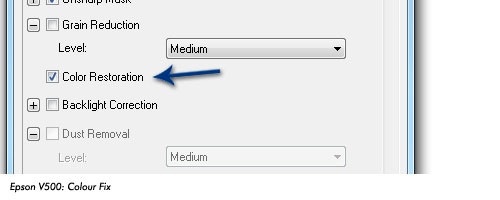
Nikon Color Fix...
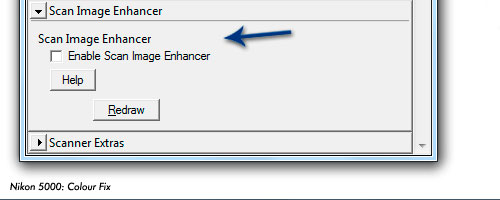
What To Do Next...
You need to do this RIGHT NOW. Load up your scanner with just ONE slide. Follow my steps above, and hopefully you're happy with the results.
If you're happy with the results, great.
But here's the thing: Digital ICE is a great quick fix. Yeah, you can go deeper and fiddle around with RBG values, and exposure levels. But if you're going to do that, why not use GIMP or Photoshop to do that. You'll get far superior results.
I'm not saying you shouldn't use Digital ICE. I just want you to know that there is NO quick fix. If you are serious about getting quality scans, then you need to use image editing software DESIGNED to fix images.
And of course I will show you how you can use Photoshop, GIMP, Lightroom, and even Adobe Elements. These programs are far better than Digital ICE. Yes, it takes more work then pressing a few buttons. But if you're not happy with the results, then check out my Advance Scanning Tips.
Free Ebook: Tells You Secrets To Getting High Quality Slide, Negative, Photos Scans In Half The Time
Which of these scanning troubles do you want to overcome?
- What's the best resolution / DPI to scan your slides, negatives, and photos -- so you don't lose details
- Best method to digitize slides, negatives, photos using your regular flatbed or film scanner
- How to clean your negatives, slides, and photos before you scan them -- so you don't scratch them
- What side should you scan a slide or negative -- so they're not backwards or facing the wrong way
- How to setup your scanner to get higher quality digital images -- 24bit JPEG? 48bit TIFF?
- How to fix your digital images using Digital ICE, GIMP, or Photoshop and make them look new
- How to improve your scan workflow so you can double your productivity and finish your project twice as fast
- Understand the technical stuff of a digital image so you can make sideshow videos, reprints, and more!
Hey, my name is Konrad. I've been scanning professionally since 2005. I've helped multi-billion dollar companies, pro sports teams, pro photographers, artists, museums, book publishers, etc. I've scanned over 930,000 slides, negatives, photos.
The reason I'm telling you this is because no matter what challenge or frustration you're having, I know exactly what you're going through. So, to help you RIGHT NOW, I've put together a super simple scanning guide to get you started.
